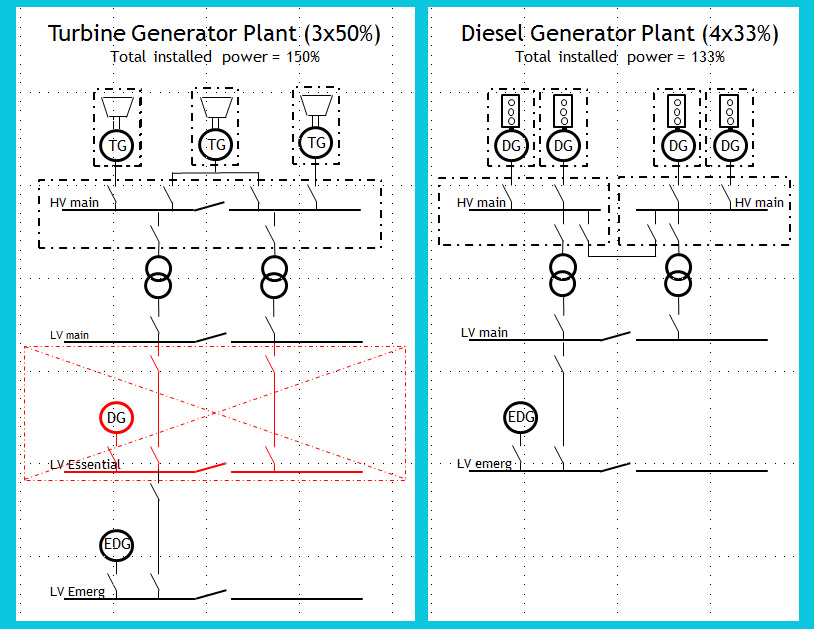Traditional Power Plant in FPSOs
Did you know that most of the FPSO main power generation solutions are made with turbines? Typically turbines are large units dimensioned (e.g. 3×50%). Big turbine units mean big load (50/100%) steps in operation, but similarly also in failure scenarios. Tripping of a faulty turbine leads automatically in to a blackout situation, where recovery takes a very long time.
You probably also know that in addition to main power, FPSO power generation network traditionally includes essential power packages. With the aid of essential power packages number of auxiliary equipment needs to be powered before ramp-up/down and connection of ‘sensitive’ standby turbine generator in the network. Typically 2MW essential diesel generators are being used in FPSOs, while they also feed vital loads in topside process plant. Due to bigger and bigger topsides essential generator sets tend to grow bigger as well (trend has been towards higher outputs, even up to 4MW).
Modern Power Plant in FPSOs
Reciprocating engines are becoming more and more popular prime movers for main power. Development has been rapid, thanks to their high efficiency in variable loading conditions and fuel flexibility, capable of burning both gas or liquid (crude, HFO, MDO) fuels. Smaller unit sizes and higher number of units mean more flexibility in the overall power plant operation. This enables more steps/configurations for operating in optimal efficiency of the power plant at all times, including partial loadings.
Deltamarin’s alternative engineering approach for FPSO power plant offers much higher level of redundancy against failures (fault, fire, flooding). The idea is simple, design basis shall be continuous power generation on FPSO. High voltage mains power generation shall always be remained with highest priority, and if lost, fast recovery is the key for safety of the people and processes.
We do propose (n+1) individually packed generator set modules meaning that an intervention on single module will not impact the remaining ones. Key issue is not to install more than one engine in one power module. Together with proper load shedding as design basis in redundant diesel power plants, single failure consequences can be minimized. Even if blackout occurs, the key feature is that the main power module (which is in standby condition) can be started and connected as fast back to the network, as a typical 2 or 4 MW essential generator set (in a turbine application). The big issue which makes difference in safety and uptime of FPSO is that within 1 minute you can get back big main generator (e.g. 15MW) and recover your high voltage mains power generation. Built-in day tank and autonomous fuel supplies in each module gives greater confidence in offering an up-time guarantee and will make planning and execution of maintenance significantly easier and safer in operations.

Main differences in the FPSO power plant architecture
Dare to challenge the usual and innovate something better, in forms of:
• Lowest capital expenditure, high level of redundancy, no need for essential genset(s) nor dedicated essential distribution networks. Only main and emergency distribution needed
• Lowest owning and operating costs, fuel savings, incl. all planned and unplanned repairs
• Ability to produce power and heat with high availability and overall plant efficiency
For more information please contact

Department Manager
Tel. +358 2 4336 324
Mobile +358 50 3258 094
jari.maki@deltamarin.com






No comments yet.